Just a short drive from Watamu Beach is one of Kenya’s ecological gems, the Arabuko Sokoke Forest Reserve. Here you can wander the cool of this ancient forest and spot such rarities as the Sokoke Scops-owl, Sokoke bushy-tailed mongoose, the Ader’s duiker, the blotched genet cat and the caracal. You might also see bushbabies, Sykes’ monkeys, yellow baboons and vervet monkeys or representatives of the 230 species of birds and 263 species of butterflies.
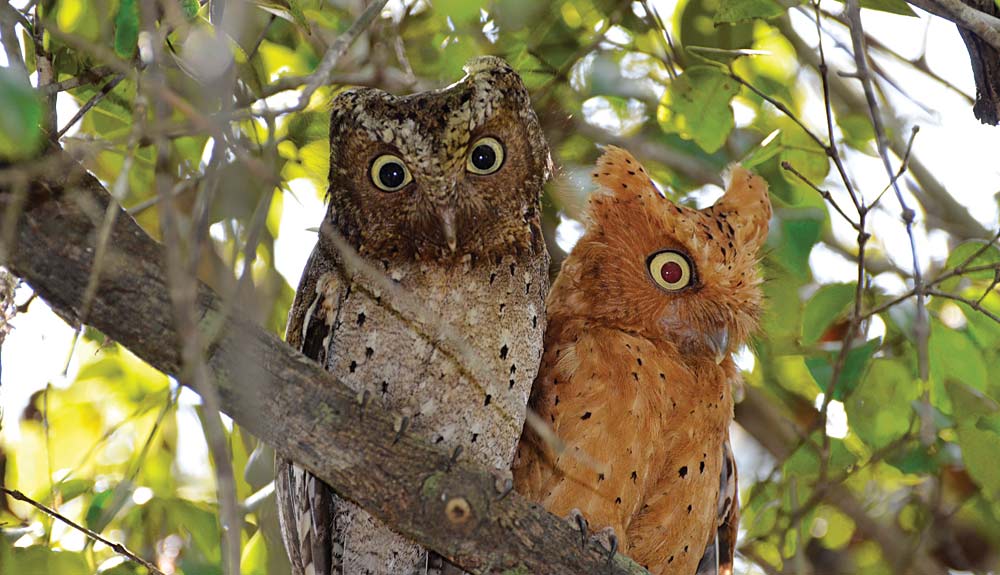
To spot the famous Sokoke Scops-owl in the Arabuko Sokoke Forest Reserve you have to get up early. It’s nocturnal, on the IUCN red-list of endangered species, and traceable only by its whistle. And it’s only six inches high.
‘How early?’ we ask Jonathan, our guide, ‘around 4am,’ he says, ‘but if you want to see it I’ll send someone into the forest overnight. They’ll sit under its tree until you arrive.’ Owl-sitting? Well why not.
Elephant ahead! Simple – just take off your shirt…
Arabuko Sokoke solutions are colourful. Take the solution to the potential problem of encountering the forest elephants. The evidence as to their existence is everywhere. Their droppings litter the track, their tunnels dive off left and right into the dense undergrowth; and from time to time there’s an overturned tree across the track; and its roots have been wrenched off. So what happens if we meet an elephant on a track only broad enough for humans to walk two-abreast? The solution is scholarly.
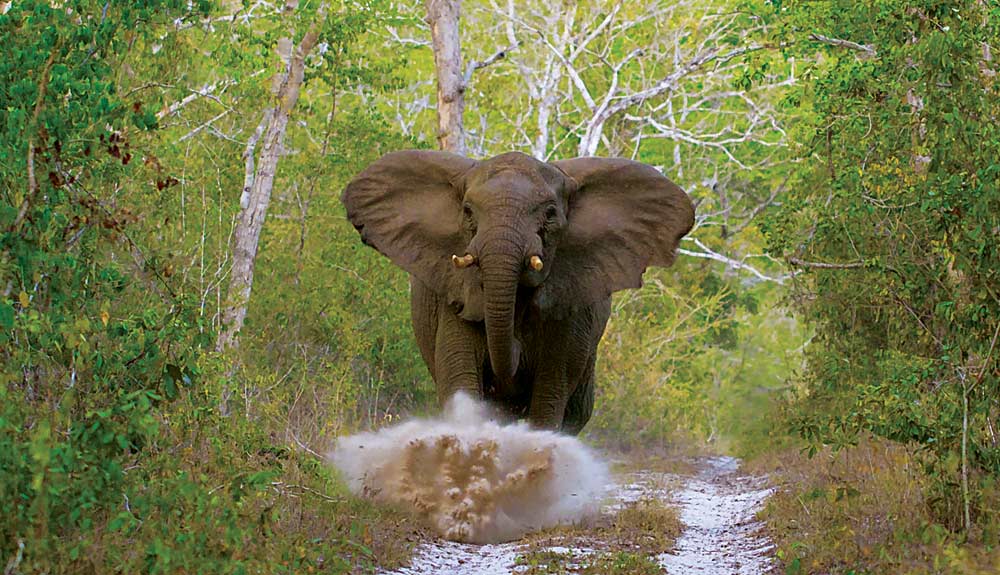
‘Take a handful of sand and run it through your fingers’, says Jonathan. ‘Why?’ we ask. ‘To determine the wind direction’, he replies. We’re still mystified. ‘Elephants are very shortsighted,’ he explains, ‘so if you run in the opposite direction to the wind they won’t get your scent.’
We remain unconvinced. Is there not a more rapid response mechanism to a three-ton elephant on a tight track? Jonathan pushes his glasses up his nose. ‘Well,’ he says at last, ‘you could take off your shirt.’
Really? Now, why would we do that?
‘To throw at the elephant and so confuse its sense of smell,’ says Jonathan, ever the academic. There’s doubt amongst the female members of the party as to the wisdom of plunging bra-clad into the bush while elephant pursued, but we keep it to ourselves. And we’re rewarded by the assurance that the likelihood of our encountering elephants is zero: they have a marked aversion to human company. ‘You’ve got a much better chance of seeing a golden-rumped elephant shrew,’ says Jonathan. We’re keen. But we’re destined for disappointment because the forest delivers up her treasures slowly, and the shrew isn’t one of them. ‘You have to look for the little things,’ says Jonathan.
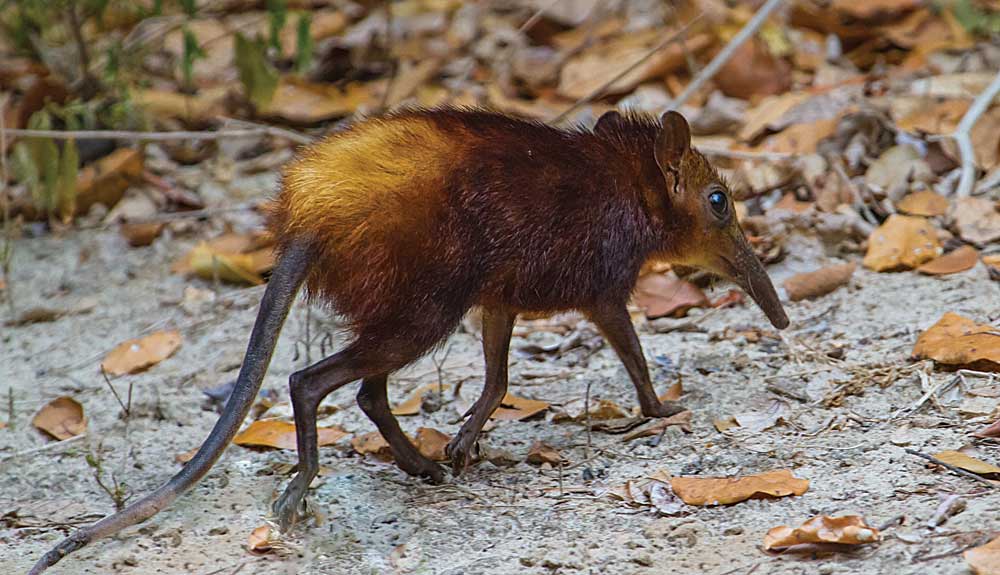
It’s the little things
And so it is that we find ourselves engrossed in the do-or-die drama of a train of Matabele ants and a nest of termites. It’s epic. The ant-scouts scurry ahead; the soldier ants bring up the rear. They’re moving fast; and they mean business. In their mound, the fat white termites lie supine, blithely unaware of their approaching doom. The climax is superb: the nest is breached; the termites are carried off squirming between the shiny black pincers of the ants. What a denouement. And not only for the termites.
Looking down at our feet, we realize we’ve been ravished ourselves. Our shoes and socks are covered with tiny Chinese dragons with red, furry, crested tufts: they’re only caterpillars, but all the same… Then, looking up, we find we’re walking amid clouds of dancing butterflies, some as tiny as sugar cubes, others the size of coffee cups. Arabuko Sokoke is getting into her stride.
The bird whisperer
We follow the track through three distinct forest zones: in the first the branches arch over our heads and the air is heavy with the sultry camphor scent of mahogany. In the second, huge ferns edge the track. They’re cycads, the last surviving members of a species that flourished when the dinosaurs walked the earth. In the third, the air is filled with birdsong. A fish eagle screams overhead; a pair of tropical boubou sing an endless bubbling duet that ripples through the air like the gurgling of babies.
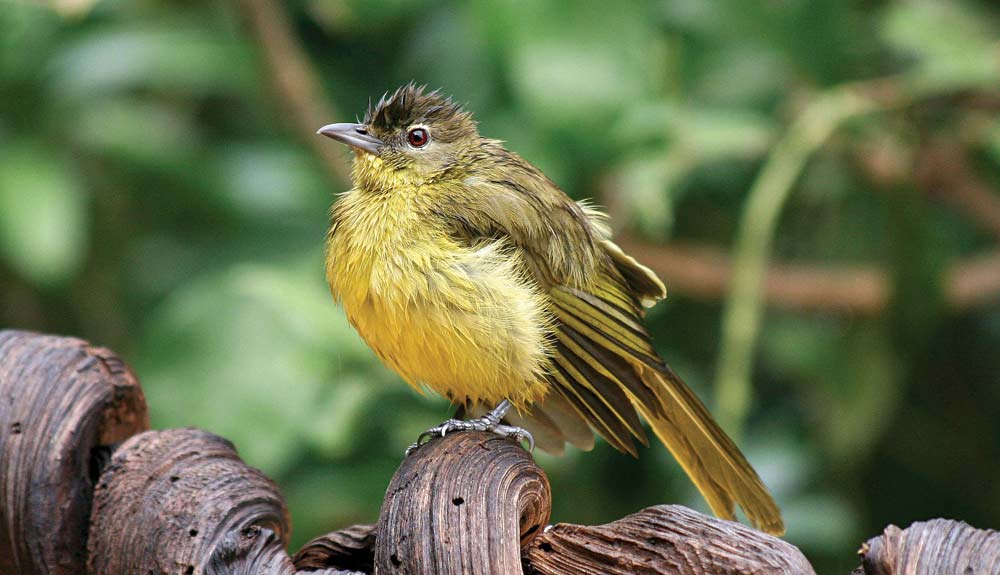
Suddenly Jonathan raises a hand for silence. He’s caught the distinctive call of a yellow-bellied greenbul singing deep in the bush. He mimics its three-note call to perfection. Fooled into thinking there’s a willing female on the track, the greenbul ventures ever-closer until he’s in the branches above Jonathan’s head. The man and bird exchange soft endearments. They’re mutually entranced. It’s a rare skill that Jonathan has perfected over many years of guiding. He’s good: very good. He’s a bird whisperer.
Arabuko Sokoke Forest Reserve – Need to know
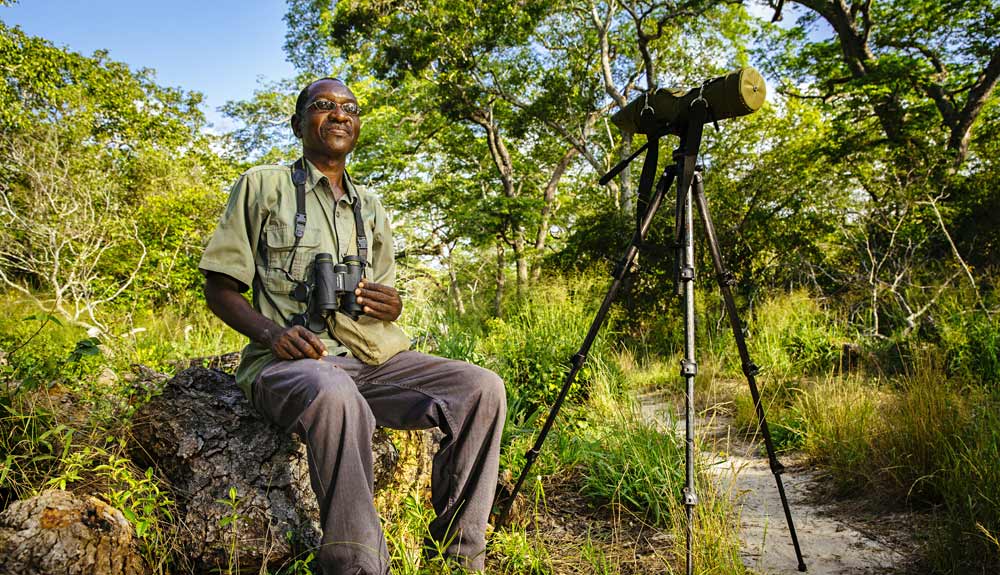
The visitor centre of the Arabuko Sokoke Forest Reserve lies 1.5 km south of the Gedi/Watamu junction on the Malindi-Mombasa road. Here you can engage the services (for a small fee) of an official guide. Alternatively you can meander the tracks alone. The forest hosts 230 species of birds, 263 species of butterflies and such rarities as the Sokoke Scops-owl, Sokoke bushy-tailed mongoose, the Ader’s duiker, the blotched genet cat and the caracal. There are also bushbabies, Sykes’ monkeys, yellow baboons and vervet monkeys.
Our guide was Jonathan Baya – to book him email: jonathanbayakarisa.com
© 2024 Kenya Holidays
